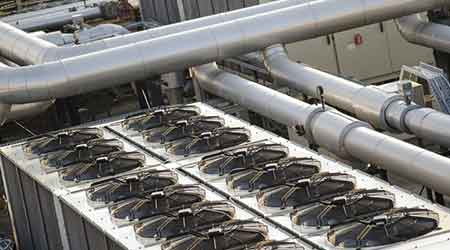« Back to Facilities Management HVAC Category Home
Predictive Maintenance Considerations for Property Managers
October 25, 2016
- HVAC
By Saar Yoskovitz
Juggling the daily responsibilities associated with both commercial and residential property management is not an easy task. In addition to handling tenant complaints on a regular basis, from heat and air conditioning failure to humidity and air quality problems, breakdowns seem to happen at the worst possible times. Key considerations for property managers include lowering operating costs through optimizing energy efficiency, maintaining comfort and safety of a facility and its occupants, minimizing downtime, and taking care of expensive equipment. Preventing property damage caused by HVAC malfunction should be a top priority.
HVAC system breakdowns are a major cause of stress for property managers. HVAC failure in commercial buildings can have significant financial consequences due to extended downtime for repairs and the interruption it can cause to businesses.
Regular HVAC maintenance is essential in avoiding the high cost of downtime and repairs associated with system malfunctions. Although slight variations in HVAC infrastructure exist from building to building, one of the most common issues resulting from malfunction is downgraded air quality. Other common issues connected with malfunctioning HVAC include odors, inconsistent air flows, leaking refrigerant, dirty ducts, lubrication concerns, and energy waste. Unchecked, malfunctions in heating and cooling systems can lead to water leakage, which in turn can result in damaged walls, ceilings, and floors. Furthermore, an underperforming machine uses more energy than a piece of equipment in optimal working condition, resulting in higher costs and additional headaches.
Having redundancies built into HVAC systems can prevent scenarios in which the breakdown of one machine leads to a complete system failure.
Today, many property and facility managers have access to building automation systems (BAS). While building automation is a strong tool for monitoring the centralized controls of a building, it does not provide the indepth data needed for property managers to make informed decisions about equipment maintenance. Trying to glean information through this surface method often leads to inconclusive and skewed results as vanity metrics may look good on paper but, in actuality, are meaningless. Therefore, it is essential to employ predictive maintenance (PdM) methods alongside BAS for actionable direction.
Developing a Strategic Plan for HVAC Maintenance
PdM is a maintenance plan based on realtime information derived from conditionbased monitoring, resulting in greater equipment reliability and improved planning. This selfmaintenance approach allows a machine to monitor and diagnose itself through a connected device that collects, for example, vibration and ultrasonic sensor data. Using machine learning algorithms, the data is analyzed and the appropriate repairs/replacements can then be performed.
Where preventive maintenance has traditionally been the backbone of HVAC monitoring in business and industry, predictive maintenance is becoming more prevalent. Preventive maintenance is a schedulebased plan where maintenance is carried out at set intervals for routine checkups. While this costeffective method increases asset lifespan and reduces unplanned downtime, it does not take into account asset wear which can lead to excessive maintenance or machine failure. Predictive technology empowers early fault detection through testing, diagnostics and machine learning to identify and prevent HVAC system failures and consequently diminish data center downtime.
However, the costs associated with implementing an equipment monitoring system can be significant. Despite the clear benefits, PdM was previously unaffordable for the lowerend market. But with the advent of mobile hardware and cloudbased computing, PdM is now available at a fraction of the cost of systems that were once hardwired and required highly trained technicians to analyze results. This has allowed PdM to trickle down into new markets, helping to streamline and optimize operations.
Conclusion
Property managers can take advantage of evolving technologies that provide more costeffective methods to reduce system breakdown. Buildings equipped with BAS allow facility managers to oversee multiple buildings and floor levels from one strategic position but PdM is the critical key when it comes to maintaining an optimal HVAC system to provide a safe and healthy environment for a building’s occupants, reducing downtime and lowering operating costs.
Saar Yoskovitz is the CEO and co-founder of Augury. He has extensive experience in machine learning, signal processing algorithms, and system architecture. Augury brings technology that is designed to listen to machines, analyze the data, and catch malfunctions before they occur.








